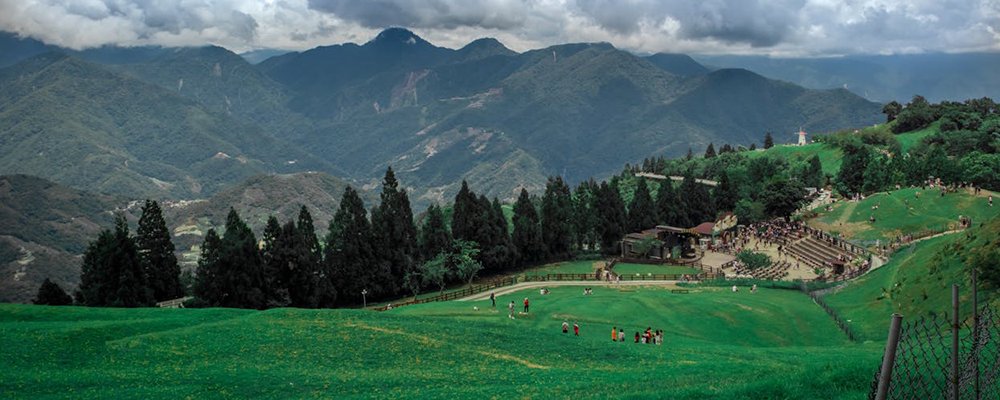In the third part of our series about the Cittaslow Movement, we continue to examine some of the towns and cities across Asia that have embraced a slower life for residents and tourists.
China
Yaxi: Located in the northeast of Gaochun County, Yaxi covers an area of 50 square kilometers with a 48-kilometer-long scenic belt. It consists of six villages with a population of 22,000. Yaxi is rich in cultural and natural resources.
It is home to Yongqing Temple in Jingshan Bamboo Forest, Nancheng City Ruins and Daguan Reservoir excavated by Liu Bowen in Ming Dynasty. Sunflowers, lavender, pear trees, tea, thousands of square meters of red maple trees and golden rape flowers make up Yaxi's unique landscape.
There are two main events in Yaxi, namely Golden Rape Flowers Tourism Festival and Land Art Festival, which are held annually. Tourists can participate in various agricultural activities, escape from the city's busy life, relax, and enjoy the harmony of humans and nature.
Fuli: Fuli is located in Fuchuan Yao County. Centered on the Shenxian Lake ecological leisure park, the town is around 25 square kilometers in size and has jurisdiction over 12 village communities, 31 natural villages, and 8680 households, with a population of 49,318. Fuli town is inhabited by Yao and Han nationalities, and it has become part of Fuchuan since the 4th year of the Kaibao period in the Song Dynasty.
There are several areas across China that have also signed up to the Cittaslow approach, These include Changjia (Gaoqing County), Changshan (Zigang), Dongying, Erdaobaihe (Changbai Mountain), Jingyang (Jingde County), Luzhi (Wuzhong District), Maolin (Yudong New District), Shimenshan (Qufu city), Songbai (Shennongjia Forest District), Yanyang (Meizhou city), Yingpan (Zhashui County) and Yuhu (Wencheng County).

Taiwan
Dalin: Dalin Township is located in Chiayi County and has a population of 31,917. Geographically, Dalin is important for transportation in the southwest part of Taiwan.
Dalin was formerly known as "Dapulin" since the Qing Dynasty (the last Chinese dynasty).
As an agricultural town, with abundant produce such as rice, bamboo, orange, pineapple, and orchid. Dalin is one of the largest suppliers. As a green town, it has won twice the "the High-Quality Environmental Demonstration Area" prize from the Environmental Protection Administration in the past years.
Fonglin: Fonglin is between the Central Mountain Ranges and the Seashore Mountain Ranges in eastern Taiwan. This town has a total area of 120 square kilometers and a population of 11,325. Its economy is based on agriculture, which produces rice, corn, watermelons, and bananas.
Food is connected to the life and culture of this town. Traditional cuisine here mainly includes rice. Examples of this are Rice Ball (Tang Yuan), Pumpkin Cake (Nan Gua Gao), Red Turtle Custard (Ong Ku Koe), Rice Bowled Cake (Wan Gao), Sticky Rice Balls (Ma Shu) and Hakka Vegetable Bum (Hakka Cai Bao)
There is also a restaurant using a garden-to-kitchen concept. Four Generations Farmers is owned by a local family. There is no menu, and all the dishes depend on seasonal availability. They offer creative country-style dishes.
Another local business operates a restaurant and B&B from a historical tobacco drying shed, Old Trees. The building is surrounded by hundred-year-old trees from which the business derives its name. They offer traditional dishes such as Hakka Pork Hock and Pounded Tea.
Taiwan also hosts three other Cittaslow members. These are Nanzhuang, Sanyi and Jhutian
Japan
Kesennuma: Kesennuma City is in the northernmost part of Miyagi Prefecture, in the Tohoku region of Japan's central Honshu Island. It is a port city with an intricate and fascinating coastline facing the Pacific Ocean and lush mountains.
It is the closest port city to the offshore area where the warm Kuroshio current meets the cold Oyashio current. This offshore fishing spot is considered to be one of the three most important fishing spots for global fishing.
Kesennuma has a calm and deep natural harbor that has Oshima Island which is also called a "green pearl", situated at its mouth. The bay is an important connection between Kesennuma and the world. Whilst the sea and its bounty have played an important and constructive role in Kesennuma City's history, they have also caused many disasters, including tsunamis.
Azara is a typical regional Kesennuma dish based on the idea of enjoying food without wasting it. It consists of a stew containing Menuke (a red rockfish), pickled cabbage, red snapper, and sake cakes.
For Part 1, click here
For Part 2, click here
 Andy Probert is an experienced freelance business travel journalist and PR specialist.
Andy Probert is an experienced freelance business travel journalist and PR specialist.














